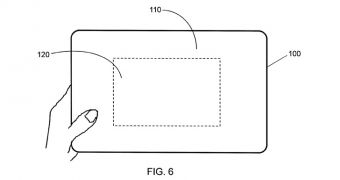A newly uncovered Nokia patent suggests the company might be developing a technology allowing bezels to be used in an interactive way.
Bezels are an integral part of a tablet's design and, even if in some products their thickness can be bothersome to behold, there’s no way around them.
Nevertheless, in recent times bezel designers have managed to shrink its size to the point of them not being noticeable at all. Even so, bezels are still there and manufacturers are starting to consider alternate uses for this particular device component.
Nokia, for one, is apparently working on a concept that will allow tablets to have interactive bezels. Apple, for example, has tried bestowing a technology on their new iPads allowing users to grip the device’s screen by the edge, without having it interact with the tablet. The idea behind this system is to prevent accidental taps due to the bezel’s being too thin.
But Nokia has something different in mind. The Finnish company is looking to make the bezel an active part of the tablet experience and unlike Apple, they want the user to touch the bezel and interact with it. According to a new uncovered patent Nokia is working on such a system.
“A force component of the touch input may be detected and compared to a predetermined force threshold. In cases in which the force component of the touch input exceeds the predetermined force threshold, user interaction with the content at that location may be enabled.”
“In this way, the force exerted by the user in applying a touch input in the bezel area may be considered an indication of the user’s intent to interact with corresponding content within the bezel, and such interactions may be provided for accordingly.”
Don’t imagine the bezel will be on all the time. Apparently, the machine will be smart enough to be able to discern what apps you’re using, to understand what you’re doing. In the case the situation allows it, the bezel will be turned on.
As an example, the bezel could be used to display playback controls or the camera shutter button, volume adjustments and so on. However, a patent doesn't necessarily mean Nokia will ever put a product with an interactive bezel on the market.
Nevertheless, the technology could be applied for both smartphones and tablets, but since the Finnish company has only a slate (Lumia 2520) on the market, it would be interesting to see a next-gen Nokia Lumia tablet with an interactive bezel. Would you be interested in such a product?

 14 DAY TRIAL //
14 DAY TRIAL //